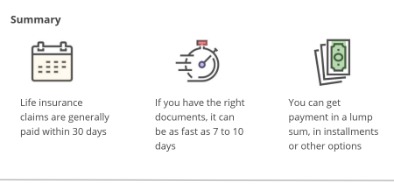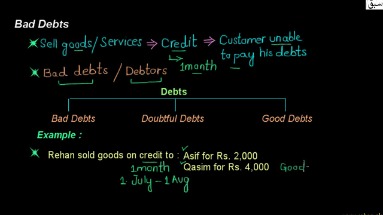Content

Even experienced accountants use T accounts to help them understand more complicated transactions. The account is a crucial instructional tool in double-entry accounting, demonstrating how one side of a transaction is reflected in another account. However, this method is not applicable in single entry accounting since each transaction affects only one account. To illustrate all accounts affected by an accounting transaction, a group of T-account is usually clustered together. In the below example, Jaclyn, the owner of a coffee shop, purchased an espresso maker.
- The closing balance of accounts payable account is $15,240.
- Credit accounts payable to increase the total in the account.
- In the below example, Jaclyn, the owner of a coffee shop, purchased an espresso maker.
- The credit was to loan, so this is used to describe what has happened to our bank account above.
This can cause a company’s general ledger to not balance. However, since debits and credits are entered at the same time, these kinds of mistakes can be easier to catch if the accountant checks his numbers after every journal entry. An asset is a present right of an entity to an economic benefit (CF E16). Common examples of asset accounts include cash on hand, cash in bank, receivables, inventory, pre-paid expenses, land, structures, equipment, patents, copyrights, licenses, etc. Goodwill is different from other assets in that it is not used in operations and cannot be sold, licensed or otherwise transferred.
How are accounts affected by debit and credit?
You can see the specific date, the description of the transaction and a running balance beside the debits and credits. T-accounts can display transactions from a specific time period such as a week or a month. By displaying multiple transactions over a time period rather than a single transaction, it allows people to see a picture of a company’s activities. Because all financial transactions affect at least two accounts, one side of this transaction will entail a debit and the other side credit.
- Finally, the total amount balance for each account is shown at the bottom of the account.
- This shows where the account stands after each transaction, as well as the final balance in the account.
- These items are classified as assets within the business.
- This gives companies an accurate picture of where they stand financially at any given time.
The credit column totals $7,500 (300 + 100 + 3,500 + 3,600). The difference between the debit and credit totals https://quick-bookkeeping.net/what-is-the-kiddie-tax-and-how-does-it-work/ is $24,800 (32,300 – 7,500). Having a debit balance in the Cash account is the normal balance for that account.
T Accounts
When we introduced debits and credits, you learned about the usefulness of T-accounts as a graphic representation of any account in the general ledger. But before transactions are posted to the T-accounts, they are first recorded using special forms known asjournals. Thankfully, there is a set–and logical–way of assigning debits and credits to assets, liabilities, equity, revenues and expenses. At the end of each fiscal period, a trial balance is calculated by listing all of the debit and credit accounts and their totals. Those with debit balances are separated from the ones with credit balances. The debit and credit accounts are then totaled to verify that the two are equal.
Financial reports that use the double-entry bookkeeping method are referred to as T-Account informally. The appearance of the book keeping entries resembles the letter T, hence the moniker. Its a ledger account that has the account title at the top, debits on the left, credits on the right while a middle line separates the two columns, resembling a large T drawn on the page. The main purpose of using a T-Account is to help track and manage an individual’s financial transactions. By keeping track of debits and credits, it becomes easier to monitor the flow of money going in and out of a particular account.
Why do companies use general ledger accounts?
T-Accounts also help business owners track expenditures, natures of deals, and movement of cash. There are five types of accounts that are typically used in a business. These include assets accounts, liabilities accounts, equity accounts, revenue accounts, and expense accounts. Asset accounts show what a company owns and include both current and noncurrent assets.
How do you summarize T accounts?
* A credit just means the right side. * You summarize a T-Account by adding up both sides and placing the balance of the account (the difference between the two sides) on the side with the larger total. This is called “footing” an account.
In the below example of a journal entry, a business owner paid their employee’s salary. Cash was used to pay the salary, so the asset decreases on the credit side , and salary expenses increase on the debit side . A T-account is a graphical representation in the shape of the letter “T” used in the field of accounting to record the balance of accounts. What Are T Accounts? Definition And Example A T-account for every accounting entry should be maintained in the ledger where all the transactions of a business are recorded. The left half of the T-account is termed the debit side and the right half is termed the credit side. You can also use the T-accounting method for any transaction in your small business, including office expenses.
Increases to the Cash account go on the left side of the T; decreases go on the right. So you need three T accounts, Cash, Vehicles, and Truck Loan. On a blank piece of paper, draw your three T accounts, making them large enough you can write numbers on either side of the T. Many small business lenders or grant programs ask for thorough documentation of your business’s financial standing during the approval process. When you do your account balance, the balance itself should go on what’s called the «normal side».
- Let’s look at the journal entries for Printing Plus and post each of those entries to their respective T-accounts.
- Accounts Receivable has a credit of $5,500 (from the Jan. 10 transaction).
- A T account is a graphic representation of a general ledger account.
- In January, I pay £6000 in cash to the landlord, so my bank account is credited £6000.
- The sum of the credits ($10,000 + $5,000 + $560) is also $15,560.
The T-account presentation for the general ledger is often informal. Most companies use accounting software to create their records. Usually, this software prepares the account ledger in a traditional format.
A T account is a graphic representation of a general ledger account. Debit entries are depicted to the left of the «T» and credits are shown to the right of the «T». The grand total balance for each «T» account appears at the bottom of the account.

